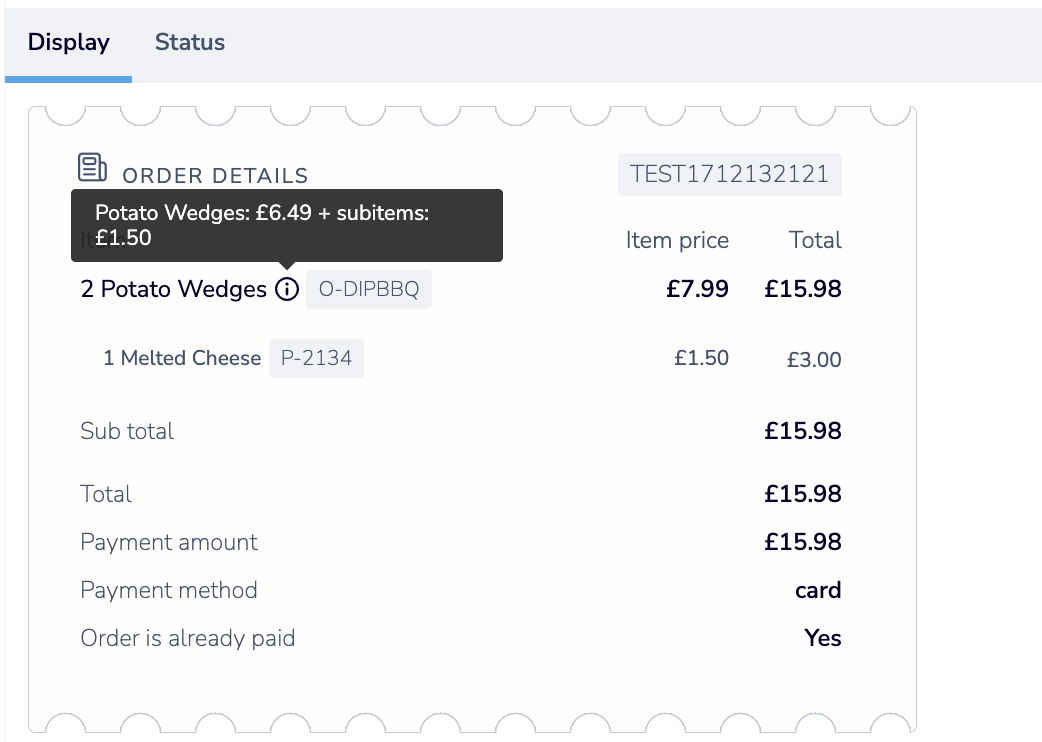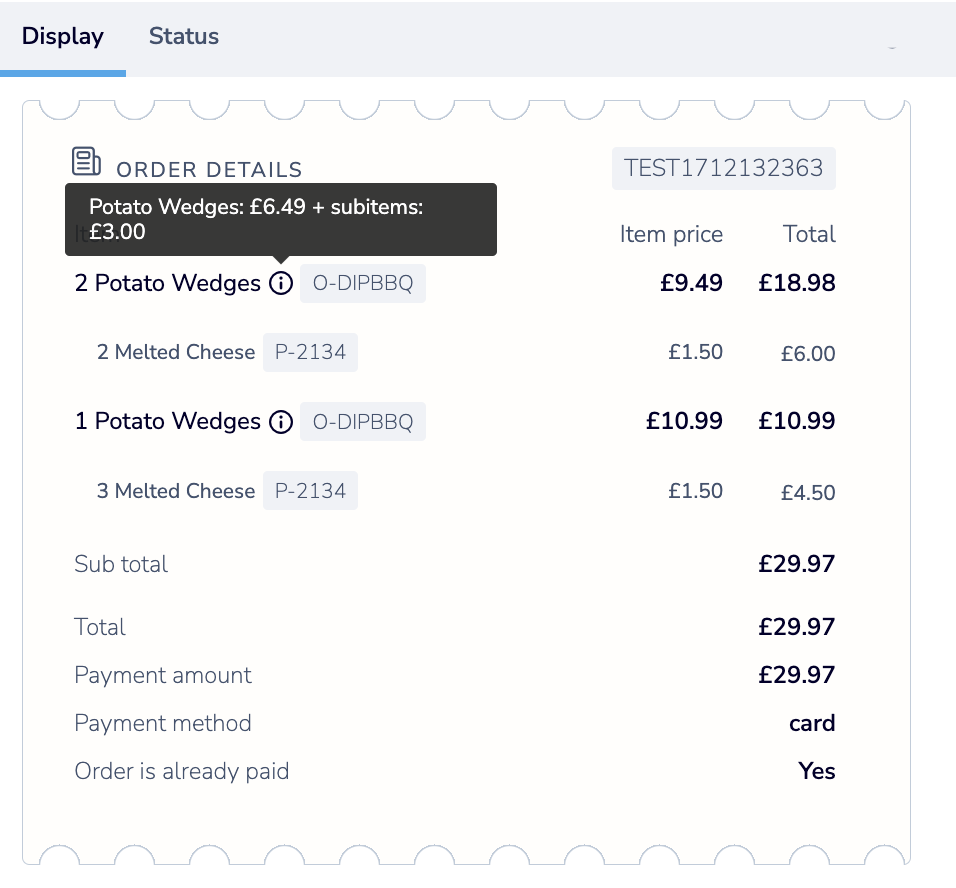Modifiers and Quantities
Modifiers are shown as sub-items.
Example order (modifier is contained insubItems)
"payment": {
"amount": 1000,
"type": 0,
"due": 0
},
"note": "",
"items": [
{
"plu": "P-001",
"name": "Potato wedges",
"sortOrder": 0,
"price": 649,
"quantity": 2,
"productType": 1,
"subItems": [
{
"plu": "M-001",
"name": "Melted cheese",
"sortOrder": 0,
"price": 150,
"quantity": 1,
"productType": 2,
"subItems": []
}
]
}
],How quantity should be interpreted and calculated
In the above example, two of the product Potato wedges have been ordered, each with the same quantity of one Melted cheese as a sub-item.
The calculation of quantity to allow for the correct charge is:
Total modifiers ordered = quantity of modifiersx quantity of products
This is shown in the example receipt below where the item price is multiplied by the quantity.
How to show this to the kitchen team

In the example below, two portions of Wedges have been ordered, each with the same amount of two melted cheese added.
In addition, one portion of wedges has been ordered with three melted cheese.
i.e. each unique order will be seperated, identical orders will be consolidated


Updated 4 months ago
See related guides